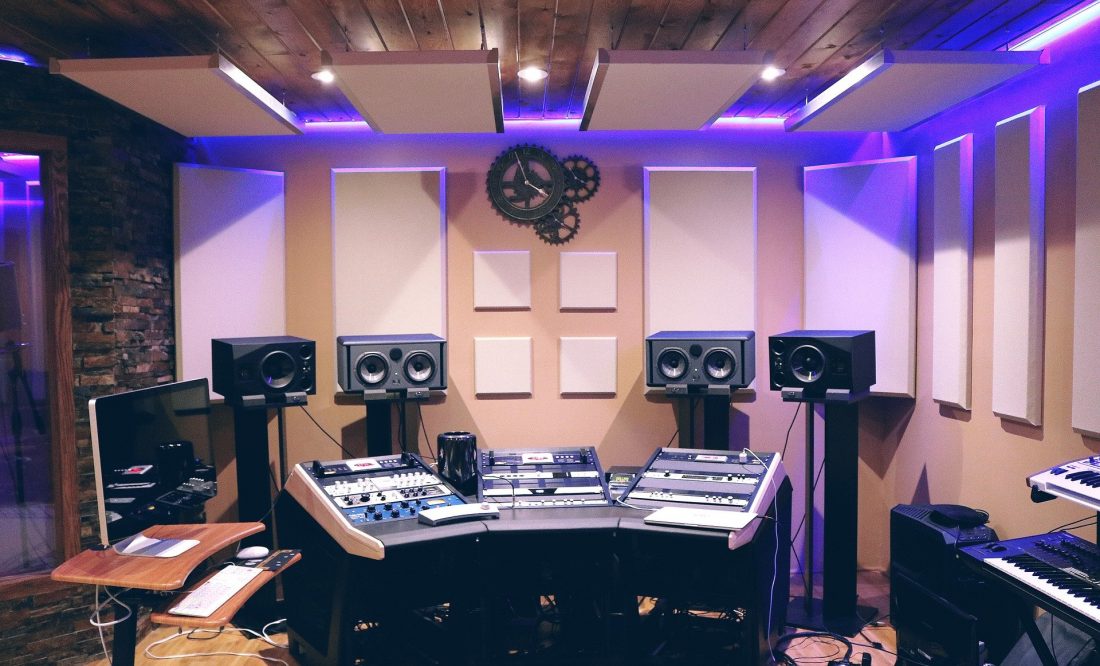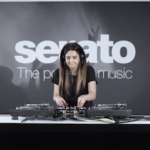
Even if you have spent thousands of dollars on speakers, audio interfaces, and DJ controllers, it all means nothing if you have nowhere to make your music. You could end up having lots of expensive gear but a barebones office and terrible acoustics.
However, with a little acoustic foam and the proper placement of studio monitors, this lackluster office can become an excellent environment for auditory perfection.
How Do I Soundproof a Room?
One of the most critical parts of audio monitoring, especially recording, is sonic isolation within your workspace. If a room echoes too much, it will disturb all recordings made in that space. One of the main ways to reduce this echo is to put sound dampening foam up all around the room, covering every crack and crevice, creating a “Foam Explosion.”
This approach is not without problems, however. First, while cheap in small amounts, the cost of sound dampening foam can add up if you are trying to cover the entire room. Also, all of that foam on the walls is, to be frank, ugly.
With that in mind, here are some additions/alternatives to the “Foam Explosion” method:
- Apply foam only to the most critical areas: This can include the wall directly in front of where you record, the corners of a room, and the wall opposite your studio monitors. You can get foam for these areas inexpensively on sites like Amazon.
- Remove disruptive structures from the space: If you have something like a drum set that rattles from sound vibrations, you should remove it to prevent the noise from inhibiting the accuracy of your audio.
- Position your studio monitors correctly: Keeping your monitors flush with the wall prevents distortion from reflection.
- Place isolation pads on unsecured items: These objects can include the feet of your desk, the base of your studio monitors, or even the stand for your microphone.
- Use thicker carpets: Laying down thicker rugs or carpets from a thrift store could be a cheap way to dampen a lot of the ambient sound in a room.
- Cover your windows: Hanging thick curtains over windows can absorb sounds that reflect off the glass.
- Modify your door: Using a door sweep or filling your hollow door with foam prevents sound waves from exiting or entering.
Another way to help soundproof your room is to invest in hardware that absorbs bass, the mortal enemy of those craving auditory accuracies. For example, bass traps are a handy way to help quell the overwhelming bass from certain low-frequency oriented tracks. It also allows you to hear more definition in those lower frequencies rather than a rumble.
More Advanced Solutions
If you have the money and the time, here are some other ways that you can modify the construction of your office to suit audio monitoring better:
- Add a second layer of drywall: If you have a couple of inches to spare, you could put another drywall layer in front of your existing wall with some air in between. This method, in combination with a layer of sound dampening foam, will make for excellent aural isolation. Make sure to cover all possible exits (i.e., use caulk on the windows to prevent sound escaping that way).
- Float the Floor: If your studio is on the second floor of your house, construct a floating floor on top of your existing floor. One of the best ways is to balance the new floor on rubber picks. In conjunction with the second layer of drywall, a floating floor is one of the best ways to improve the room’s acoustics.
- Alter the shape of your room: Adding more walls to change it from a rectangular shape can prevent sound reflections from building up. Remember, one of the most effective methods to promote sound accuracy and uniformity is to ensure all the walls of a room are symmetrical.
Having sound accuracy in your home studio is essential. From inexpensive things like selective foam application to expensive methods likes floating the floor of your second story workspace, you can ensure that your home studio has all the sounds you want—and fewer of the ones you don’t.
Sources:
How to Soundproof a Room for Audio Recording. Adorama. (2021). Retrieved 1 November 2021, from https://www.adorama.com/alc/how-to-soundproof-a-room-for-audio-recording/.
How to Soundproof a Home Studio for Recording. Masterclass. (2021). Retrieved 1 November 2021, from https://www.masterclass.com/articles/how-to-soundproof-a-home-studio #soundproofing-vs-acoustic-treatment-whats-the-difference
10 Tips to Improve your Room Acoustics. Music Tech. (2019). Retrieved 1 November 2021, from https://musictech.com/guides/essential-guide/improve-room-acoustics-recording/







0 Replies to “How To Improve The Acoustics Of Your Home Studio”